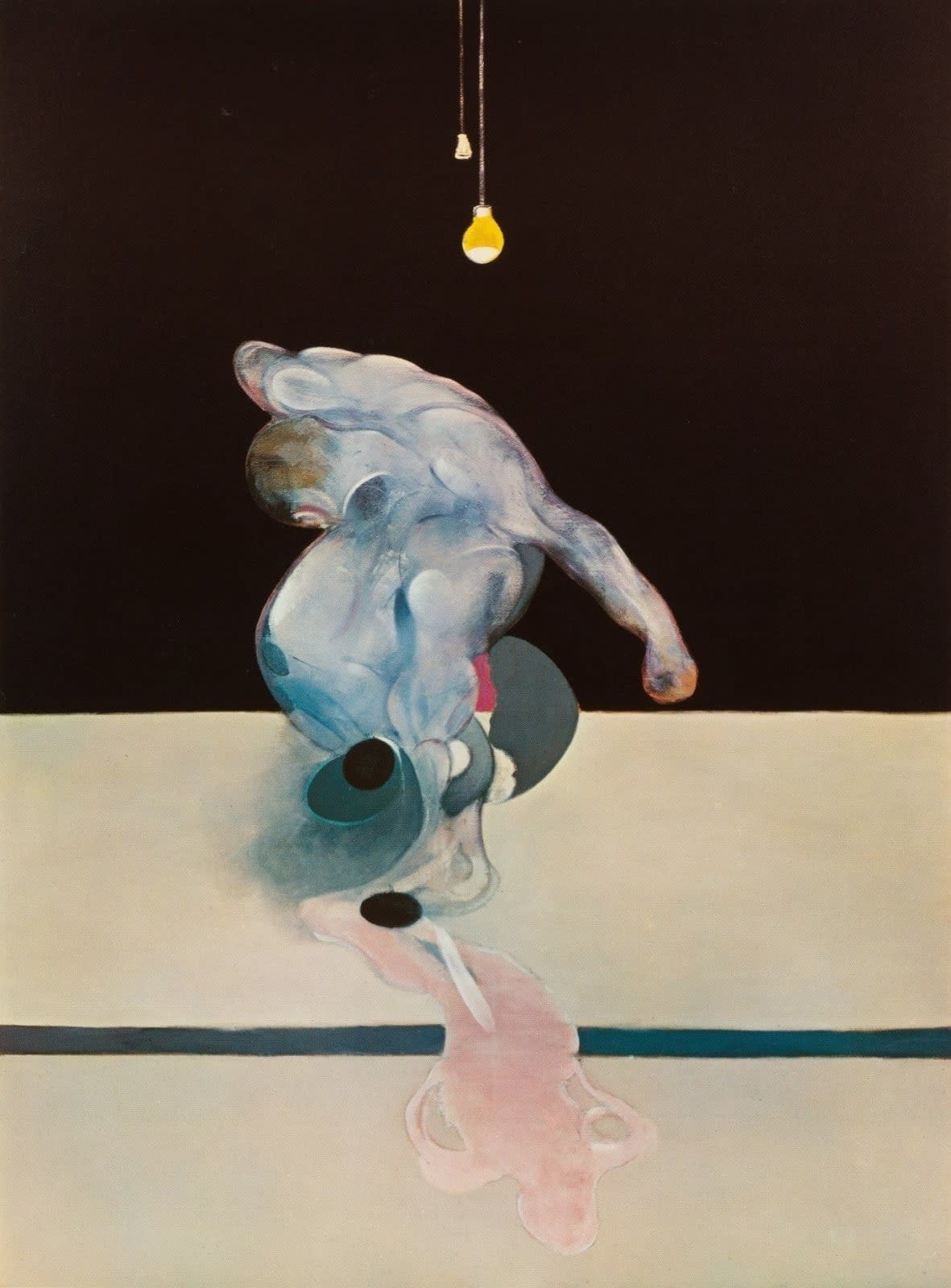
Francis Bacon
Triptych, March 1974 - centre panel, 1978, 1978
Offset lithograph on Wove paper
Signed and numbered
Signed and numbered
31 1/2 x 23 3/4 in.
80 x 60.3 cm.
80 x 60.3 cm.
Series: Edition of 150
Copyright The Artist
Francis Bacon’s Triptych March 1974 is a haunting meditation on the instability of the human form, the fragility of identity, and the unease of existence. In the attached panel, a...
Francis Bacon’s Triptych March 1974 is a haunting meditation on the instability of the human form, the fragility of identity, and the unease of existence. In the attached panel, a central figure emerges as a distorted, near-abstract body suspended in flux. Neither fully present nor fully dissolving, it appears to melt into the surrounding space, its amorphous mass of ghostly blues and pinks evoking both flesh and shadow. The image captures Bacon’s relentless fascination with the human condition—its impermanence, its distortions, and its collapse into ambiguity.
The structure of the composition heightens this disquiet. A stark contrast divides the scene: the heavy black of the background presses against the pale foreground, as if trapping the figure between opposing voids. A thin horizontal line bisects the canvas, suggesting a barrier or threshold—between interior and exterior, conscious and unconscious, or even life and death. Suspended above, a solitary lightbulb dangles, casting its faint, clinical glow. A recurring motif in Bacon’s work, the bulb here underscores the sterile atmosphere, amplifying the sense of isolation and existential despair.
Colour and form work in tandem to evoke vulnerability. The distorted flesh tones are tender and unsettling, collapsing into formlessness against the surrounding void. Blurred contours and twisted outlines give the impression of motion, as though the figure is caught mid-metamorphosis—an image of life constantly slipping away from stability. In this work, Bacon fuses distortion with raw emotional charge, presenting the body as both fragile matter and existential metaphor. Triptych March 1974 stands as a powerful expression of his preoccupation with suffering, solitude, and the fleeting nature of human existence.
The structure of the composition heightens this disquiet. A stark contrast divides the scene: the heavy black of the background presses against the pale foreground, as if trapping the figure between opposing voids. A thin horizontal line bisects the canvas, suggesting a barrier or threshold—between interior and exterior, conscious and unconscious, or even life and death. Suspended above, a solitary lightbulb dangles, casting its faint, clinical glow. A recurring motif in Bacon’s work, the bulb here underscores the sterile atmosphere, amplifying the sense of isolation and existential despair.
Colour and form work in tandem to evoke vulnerability. The distorted flesh tones are tender and unsettling, collapsing into formlessness against the surrounding void. Blurred contours and twisted outlines give the impression of motion, as though the figure is caught mid-metamorphosis—an image of life constantly slipping away from stability. In this work, Bacon fuses distortion with raw emotional charge, presenting the body as both fragile matter and existential metaphor. Triptych March 1974 stands as a powerful expression of his preoccupation with suffering, solitude, and the fleeting nature of human existence.